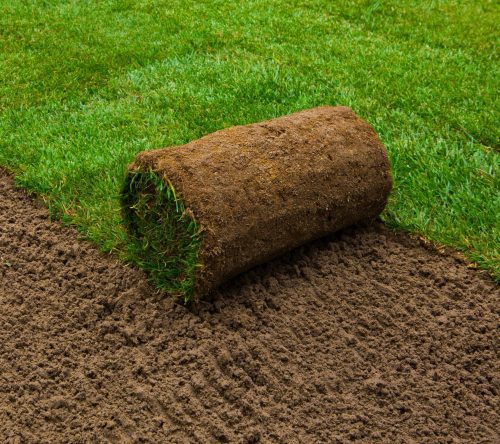- Turf
- Artificial
- Soil
- Timber
- Composite Decking
- Paving & Stone
Get In Touch With Our Experts Today!
Give us a Call! - Seed & Fertiliser
- Dressing
- Bark

April 23, 2024
Before you start turf laying, assessing your outdoor space and soil conditions is essential. By understanding your environment and soil conditions, you can select turf that will thrive in your landscape and minimise maintenance challenges.
First, determine the size of the area you want to turf by measuring its length and width, noting any obstacles such as trees, flower beds, or structures that may affect the turfing process. This will help prevent over- or under-ordering.
Next, observe your outdoor space throughout the day to determine the amount of sunlight and shade different areas receive. Note any areas consistently shaded by buildings, trees, or other structures, which will influence turf selection.
Finally, check for signs of poor drainage, such as standing water or soggy soil after rainfall. Areas with inadequate drainage may require additional soil amendments or drainage solutions before turf installation.
Choosing the right lawn turf is essential for creating an inviting outdoor space that enhances your home’s functionality and aesthetic appeal. When selecting the right lawn turf for your garden, consider the following factors:
With so many lawn turfing varieties available, selecting the suitable lawn turf for your garden can be daunting. Here’s an overview of our best-selling turf varieties and their benefits:
Choosing suitable lawn turfing for your garden project involves thoughtful consideration of various factors. By assessing durability, maintenance needs, and aesthetic appeal, you can make an informed decision that ensures a vibrant, healthy, and visually pleasing lawn.
Preparing the soil is a crucial step in laying new turf. Proper soil preparation creates the ideal environment for turfgrass establishment, ensuring healthy root growth, nutrient uptake, and long-term lawn health.
Start by clearing the area of any debris, rocks, weeds, and existing vegetation. Next, use a landscaping rake or grading tool to ensure the soil is evenly graded and sloped away from any structures to prevent water pooling.
Once the ground is clear and graded, use a levelling tool to create a smooth, even surface for turf installation. Pay attention to any bumps, dips, or uneven areas and adjust as needed to achieve a uniform surface.
After levelling the ground, use a lawn roller to lightly compact the soil surface. This helps to firm up the soil and provides a stable base for turf installation.
Finally, once you are happy with the area, thoroughly water the prepared soil to moisten it evenly. This will provide a hospitable environment for turfgrass roots to establish and promote good soil-to-root contact to ensure successful turf establishment.
Start lawn turfing along a straight edge, such as a driveway or garden path, to ensure a neat, uniform appearance. Butt the edges of the turf rolls tightly together without overlapping. Also, stagger the joints in a brickwork pattern for stability. Use a sharp knife or turf cutter to trim turf pieces to fit irregular shapes or edges.
Immediately after laying the turf, thoroughly water the entire lawn to settle the turf rolls and promote root growth. Use a lawn roller filled with water to gently press the turf into the soil, remove any air pockets, and ensure good soil-to-root contact.
Continue to water the turf regularly, keeping the soil moist but not waterlogged until the roots have established themselves in the soil. Avoid walking or heavy use of the lawn for the first few weeks to allow the turf to establish itself.
Once the turf has settled roots and started growing, it’s time to enjoy your beautiful new lawn! Remember that creating a new lawn takes time and patience. It may take several weeks for the turf to be fully established and filled in.
By following these steps and investing time and effort into proper preparation and maintenance, you can effectively turf your lawn from start to finish and create a functional and visually appealing outdoor space that you can enjoy for years to come.
Ready to transform your outdoor space and start lawn turfing? Browse our range of turf varieties and discover everything you need to know about laying and caring for your turf on our website.